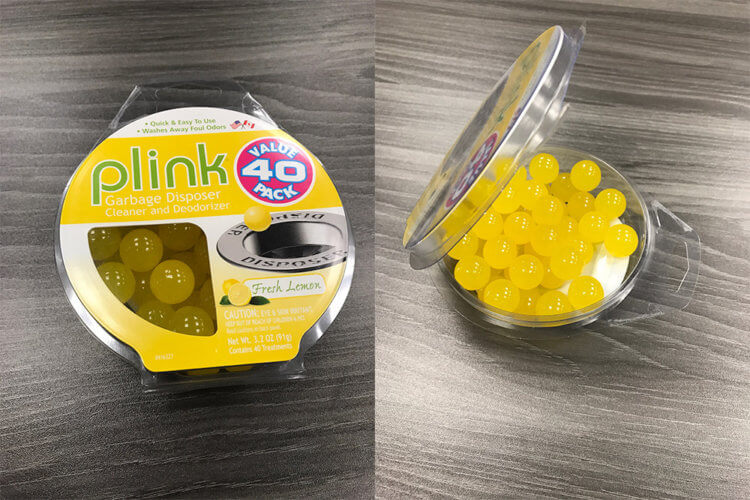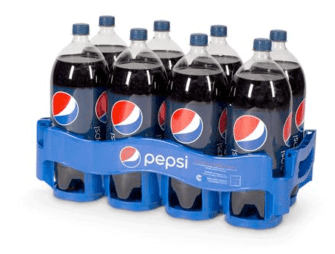 Reusable packaging furnishes benefits across the entire supply chain. As technology and industry practices continue to shift toward these reusable designs, producers and their packaging partners will find new ways to take advantage of the forward-looking distribution method.
Reusable packaging furnishes benefits across the entire supply chain. As technology and industry practices continue to shift toward these reusable designs, producers and their packaging partners will find new ways to take advantage of the forward-looking distribution method.
If you are not yet riding this responsible, money saving wave, you may be a step behind the competition.
What is Reusable Packaging?
Also known as returnable transport packaging (RTP), returnable packaging, and reusable transport items, reusable distribution packaging consists of various shipping materials designed for multiple uses. The category includes racks, bulk containers, shipping braces and supports, heavy-duty hand containers, and other reusable items. The systems can be fitted for widespread applications, replacing traditional single trip packaging options.

Reusable packaging is expressly designed to make multiple trips, so it is constructed of durable, lasting materials. The initial cost of this type of distribution packaging is more than the price of single use throwaway containers, but the investment is quickly recovered through repeated uses.
Depending upon the environment in which they are deployed, reusable designs incorporate wood, plastics, metal, corrugated cardboard and other materials. Durable plastic reusable packaging, for example, replaces things like single trip boxes and also branding benefits with increased purchase intent.
Reusable packaging programs utilize these and other multiple use items:
- Bulk shipping containers
- Pallets
- Pallet caps
- Trays
- Boxes
- Totes
- Bins
- Racks
Supporting Sustainability
In addition to cost savings over time, using returnable transport packaging brings additional benefits, including better performance and higher productivity. One of the most recognizable rewards of reusing distribution packaging relates to sustainability. Adopting reusable designs supports a larger push to minimize the environmental impact of packaging. And in a marketplace increasingly concerned with supply chain transparency, committing to sustainable distribution methods reinforces positive perception and brand integrity.

The environmental benefits of reusable packaging furnish across-the-board improvements when compared to single use alternatives. One reusable packaging study conducted by the Reusable Packaging Association (RPA) analyzed the environmental impacts of various types of packaging over their life cycles.
Tracking ten fresh produce applications, the organization found that reusable solutions required 39 % less total energy to execute. In addition, research found committing to reusable distribution solutions generated 95% less solid waste and 29% less greenhouse gas than traditional single trip approaches.
As they reach the end of their useful lives, most reusable items can themselves be recycled in conventional streams, bringing their sustainability benefits full circle.
Performance Advantages
The transition to reusable packaging systems brings new technology and designs to the distribution process, making packaging more functional. For starters, RTP alternatives can be more efficient to move and store, saving space, time, and money. The reusable containers are designed to better protect contents than one-trip packages, so using sturdy reusable distribution equipment contributes to lower loss rates. Food safety features can also be added to reusable transport systems, further expanding their added value, when compared to traditional distribution methods.
A few more advantages and cost saving benefits of reusable distribution methods include:
- Standardized sizing
- Better inventory tracking capabilities
- Efficient trucking and loading dock operations
- Safer work environments free of packaging refuse
- Reduced materials costs
- Less waste and waste management spending
- Enhanced food freshness
Spreading the Value of Reuse
The advantages of reusable distribution packaging are apparent in widespread industries. Not only do custom reusable packaging solutions facilitate storing and transporting finished goods, but switching to reusable items also boosts efficiency at other points along the supply chain. Your trusted packaging partner can help explore reusable options for your organization. And additional assistance is available from public agencies, such as this Minnesota initiative.
The benefits of sustainable packaging alternatives have spread to these and other industries:
- Nutraceuticals
- Automotive manufacturing
- Baking and confections
- Beverage
- Meat and poultry
- Produce
- Dairy
Reusable packaging is most effective within closed distribution networks, where it is easy to return and redeploy the packaging multiple times. Substantial loss of reusable items may necessitate further oversight and control measures for keeping tabs on the reusables.
Inbound materials and ingredients are particularly well suited for reusable containers. Processing plants and manufacturing facilities effectively deploy them for moving and storing ingredients and components in-house, as well as within controlled distribution systems. Whether working with auto parts, delicate electronic components, or fresh produce, reusable containers streamline production processes and improve supply chain efficiency.
Bottom Line Benefits
Cost-effective packaging and distribution solutions increase profitability, so reusable alternatives will continue to gain ground, as long as they contribute to a healthy bottom line. Fortunately, reusable technology presents money saving opportunities. Cost efficiencies are seen in the following areas:
- Faster turnaround times – Streamlined distribution processes take less time to execute, so a reusable system can cut the length of production and packaging cycles.
- Space efficiency – Standardized sizes and consistent, predictable reusable packaging help maximize storage and distribution space.
- Better inventory management – Reusable packaging contributes to better inventory management. By tracking and distributing inventory with precision, the standardized systems keep inventory moving, in a productive state.
- Less packaging waste – Single trip packaging solutions result in excess cardboard and pallet waste. On the other hand, reusable versions are either in use or ready to be put into action – at all times. Cleanup times and disposal costs are both reduced by returnable transport packaging.
- Lower materials spending – Reuse cuts the cost of packaging materials over time. Plastic and other reusables can last for years, so each trip they make reduces costs. Savings add up to substantial sums as the durable items continue providing reliable service without additional investment.
- Reduced labor expense – Standardized reusable items contribute to a consistent work flow, resulting in greater labor efficiency.
- Safer handling – Sturdy containers do a better job protecting goods in transit, resulting in less breakage and loss. And reusable designs are ergonomically friendly, supporting a healthier work force.
Moving from traditional single trip package designs to modern reusable distribution packaging leads to multiple benefits. Reusable packaging not only reduces costs and enhance efficiency, but the re-imagined approach also boosts product safety, reduces transport times, and supports sustainability initiatives. As part of a comprehensive distribution plan, utilizing reusable alternatives contributes to a well-managed supply chain and increases profitability.
